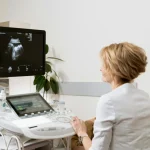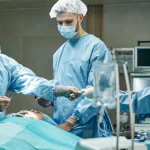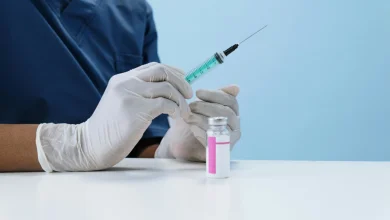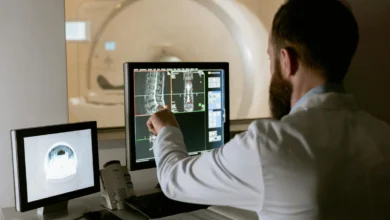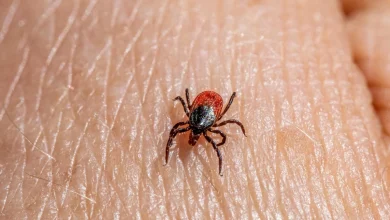Understanding Parkinson’s Disease: Causes, Symptoms, and Treatment Options
Managing Parkinson’s Through Lifestyle and Therapy

Parkinson’s disease is a progressive neurological disorder that affects how a person moves, speaks, and performs daily activities. It happens when nerve cells in the brain stop producing enough dopamine—a chemical that helps control movement. The disease develops slowly, and early symptoms are often mild. Over time, however, it can affect balance, coordination, and facial expression.
Although Parkinson’s disease mainly affects people over 60, it can also occur in younger adults. Understanding its causes, recognizing the symptoms early, and exploring available treatment options can help patients live healthier and more independent lives.
⚙️ What Is Parkinson’s Disease?
Parkinson’s disease is a disorder of the central nervous system that primarily affects motor functions. It is classified as a movement disorder, but it can also cause non-motor symptoms like fatigue, depression, and sleep problems.
The brain area called the substantia nigra is responsible for producing dopamine. When the cells in this region die or become impaired, the level of dopamine drops. This imbalance affects the brain’s ability to control movement and coordination, leading to the hallmark signs of Parkinson’s disease.
🔍 Main Causes of Parkinson’s Disease
While doctors don’t know exactly why Parkinson’s disease occurs, several factors contribute to its development:
🧬 1. Genetic Factors
Some people inherit genes that make them more likely to develop Parkinson’s disease. However, inherited cases are relatively rare — only about 10–15% of all cases are linked to genetics.
☣️ 2. Environmental Triggers
Long-term exposure to certain toxins, such as pesticides, herbicides, and heavy metals, may increase the risk. Rural living and well-water consumption have also been associated with higher chances of developing the disease.
🧠 3. Age and Gender
Age is the most significant risk factor. Most people diagnosed with Parkinson’s are over 60. Men are slightly more likely to develop it than women.
💥 4. Brain Injury and Oxidative Stress
Head trauma and oxidative stress—when the body cannot neutralize harmful free radicals—can damage brain cells, potentially contributing to Parkinson’s disease.
Common Symptoms of Parkinson’s Disease

Parkinson’s symptoms vary from one person to another, but they usually progress through stages. The key symptoms include
1. Tremors
Involuntary shaking, especially in the hands, fingers, or chin, is one of the earliest and most recognizable symptoms.
Also Read: What You Need to Know About Lyme Disease in 2025
2. Slow Movement (Bradykinesia)
Movements become slower, making everyday tasks—like buttoning a shirt or walking—more difficult.
3. Muscle Stiffness
Muscles may feel tight or rigid, which can limit motion and cause discomfort.
4. Balance and Coordination Problems
People with Parkinson’s often lose balance easily and are at a higher risk of falling.
5. Facial Expression Changes
The face may appear expressionless, a symptom known as a “masked face.”
6. Voice and Writing Changes
Speech may become softer, and handwriting may get smaller and cramped (micrographia).
Non-Motor Symptoms
In addition to movement issues, Parkinson’s can cause other problems such as:
- Sleep disturbances
- Constipation
- Memory loss
- Fatigue
- Anxiety or depression
- Loss of sense of smell
These symptoms may appear before the motor symptoms and are crucial indicators of the early stages of the disease.
💊 Treatment Options for Parkinson’s Disease
While there’s no cure yet, various treatments help manage symptoms and improve quality of life.
💡 1. Medications
The main goal of medication is to increase or mimic dopamine in the brain.
Levodopa (L-Dopa): The most effective drug for controlling motor symptoms.
Dopamine agonists: Imitate dopamine effects in the brain.
MAO-B inhibitors: Help prevent dopamine breakdown.
🧘 2. Physical Therapy and Exercise
Regular exercise improves balance, flexibility, and overall mobility. Activities such as walking, yoga, and tai chi can help reduce stiffness and improve coordination.
🩺 3. Speech and Occupational Therapy
These therapies assist with speech clarity, swallowing, and daily living tasks. They play a big role in maintaining independence.
⚡ 4. Surgical Treatment (Deep Brain Stimulation)
In advanced cases, surgeons may implant electrodes into the brain to regulate abnormal activity. This procedure can significantly reduce tremors and rigidity.
🌿 5. Lifestyle Adjustments
Healthy diet, stress management, and social support make a major difference in long-term care.
Diet and Nutrition for Parkinson’s Patients
Nutrition plays an important role in managing symptoms. A diet rich in antioxidants—found in fruits, vegetables, nuts, and green tea—helps protect brain cells.
Adequate hydration and fiber also help reduce constipation, which is common in Parkinson’s patients.
Avoid excessive protein close to medication time, as it can interfere with the absorption of levodopa.
Coping Strategies and Daily Life Tips
Living with Parkinson’s disease requires physical, emotional, and mental adjustment. Here are helpful tips:
- Stay physically active.
- Maintain social connections.
- Join support groups.
- Get enough rest.
- Manage stress through breathing exercises or meditation.
- Keep a regular medication schedule.
Can Parkinson’s Disease Be Prevented?
There’s no guaranteed way to prevent Parkinson’s, but healthy lifestyle habits can lower the risk:
- Regular exercise
- A balanced diet rich in antioxidants
- Avoiding exposure to environmental toxins
- Protecting your head from injuries
Researchers are continuing to explore new treatments and potential preventive strategies.
💬 Final Thoughts
Parkinson’s disease can be challenging, but it is manageable with the right treatment, mindset, and support. Early detection and consistent medical care help slow its progression.
Living an active life, staying mentally strong, and maintaining social relationships can greatly improve a patient’s quality of life.
Also Read: Everything You Need to Know About Tylenol: Benefits, Risks, and Safe Use
Knowledge and awareness are the first steps toward empowerment—both for patients and their families.
Frequently Asked Questions
Yes. Although it’s rare, people under 50 can develop young-onset Parkinson’s disease due to genetic or environmental factors.
Parkinson’s itself is not directly fatal, but its complications—such as infections or falls—can be life-threatening if untreated.
No permanent cure exists, but early treatment can manage symptoms effectively for many years.

